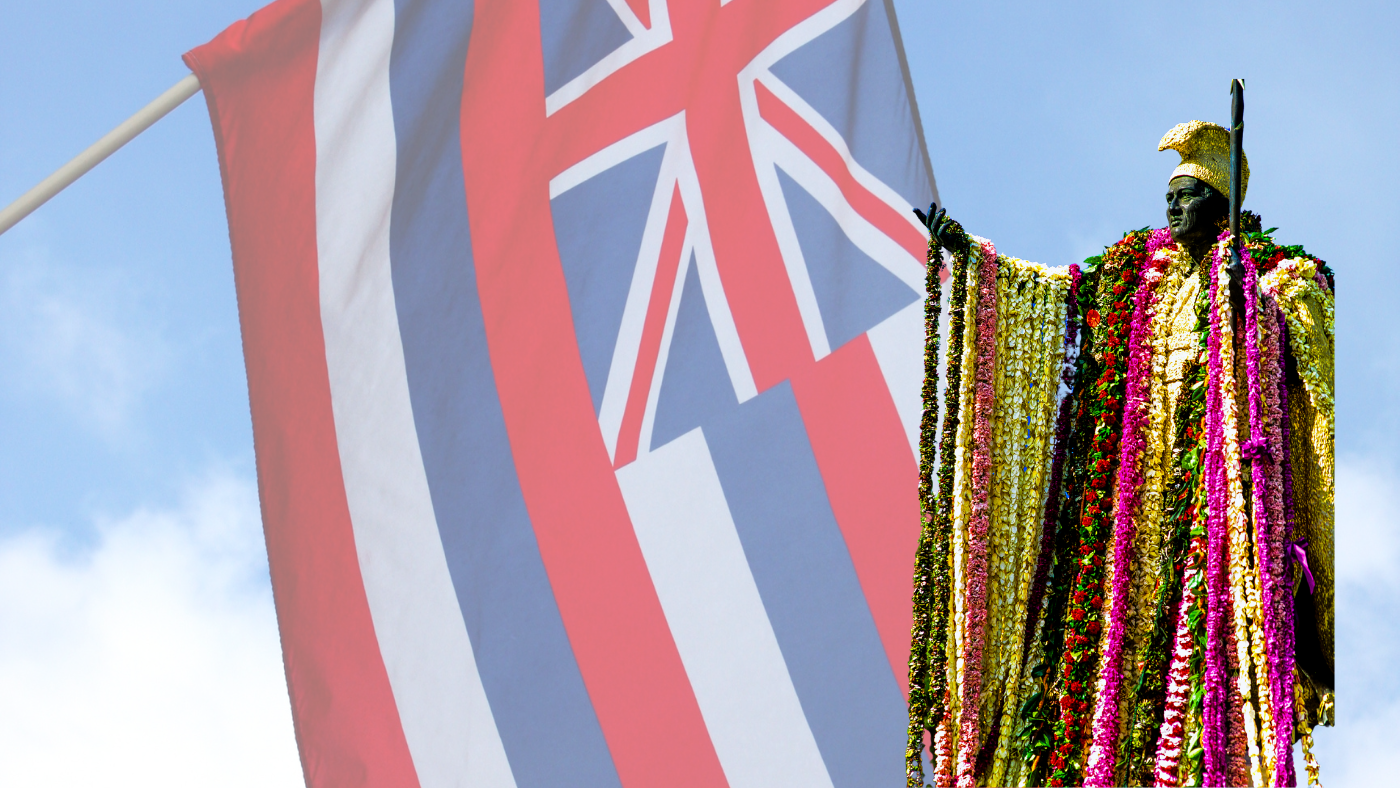TL;DR: Lā Hoʻihoʻi Ea (Sovereignty Restoration Day), celebrated on July 31, honors King Kamehameha III’s success in restoring Hawai’i’s independence after the illegal British occupation in 1843. Once the first national holiday of the Hawaiian Kingdom, it was suppressed after the 1893 overthrow but reinstated as a state holiday in 2022. The blog highlights the day’s significance in the ongoing movement for Hawaiian Sovereignty and features products that express resistance and pride in Hawaiian identity.
On July 31st, we celebrate Lā Hoʻihoʻi Ea or Sovereignty Restoration Day. This day recognizes the accomplishments of King Kamehameha III, who worked to restore the sovereignty of the Hawaiian Kingdom after the British illegally occupied the islands of Hawai‘i for four-months in 1843.
Lā Hoʻihoʻi Ea became the first national holiday of the Hawaiian Kingdom and continued to be celebrated in the islands until the overthrow in 1893. However, in 2022, the Hawai’i State Legislature designated Lā Hoʻihoʻi Ea as an official state holiday to be observed.

The Illegal British Occupation of 1843
On February 10, 1843, British naval officer Lord George Paulet illegally seized control of the Hawaiian Kingdom, claiming the islands of Hawai’i in the name of the British crown. This occupation lasted for five months and stripped the Hawaiian people of their sovereignty. In response, King Kamehameha III worked tirelessly to restore independence, appealing directly to British authorities. His efforts succeeded when Admiral Richard Thomas arrived and returned control of the islands to the Hawaiian Kingdom on July 31, 1843. In a powerful proclamation the king declared the now famous phrase, “Ua Mau ke Ea o ka ʻĀina i ka Pono” – “The life of the land is perpetuated in righteousness”-- solidifying the day as one of political and spiritual importance.

The Overthrow of 1893
Despite the earlier restoration of sovereignty, the Hawaiian Kingdom would once again face outside aggression. In 1893, American and European businessmen, backed by the U.S. military forces, illegally overthrew Queen Lili‘uokalani, ending the Hawaiian monarchy. This marked the beginning of over a century of U.S. control, with Hawai’i later being annexed without the consent of the Hawaiian people. As a result, traditional holidays like Lā Hoʻihoʻi Ea were suppressed and largely erased from public recognition.
Modern Recognition
In recent years, Hawaiian communities have reclaimed Lā Hoʻihoʻi Ea as a day of education, resistance, and pride. In 2022, the Hawai’i State Legislature officially recognized it as a state holiday, restoring its visibility and giving the new generation a chance to learn the true history. For many, this holiday is more than symbolic, it’s a call to action and a reminder that the fight for sovereignty is far from over.
Cultural Resistance Through Art
Art has always played a powerful role in resistance movements and in Hawai’i, that tradition lives on through the bold statements made by modern design like pepili (stickers) or lole (clothes). These pieces aren’t just for decoration, they are for declaration of identity, pride and protest.
Shop some items and carry the message forward:

This design challenges the narrative that Hawai’i is just another U.S. state. Featuring original artwork, the “Fake State” pepili (sticker) reminds us that Hawai’i was never legally annexed and that the Hawaiian Kingdom still exists under international law. It’s a symbol for those who reject the erasure of Hawaiian sovereignty and seek to educate others through visual truth.

Simple yet powerful, the “Free Hawai’i” design speaks to the continued call for justice, de-occupation, and self-determination. It’s a unifying phrase seen across signs at protests and gatherings, and now, on your water bottle, laptop, or car. This pepili is more than a message: it is a movement.
“All Sovereignty for All Hawai’i” Pepili

This design takes conservation a step further, centering inclusivity and collective empowerment. It acknowledges that sovereignty isn’t just political– it’s cultural, spiritual, and deeply personal. This pepili calls for the liberation of the Native Hawaiian land, language, governance, and people.

All of these lole (clothes) are part of the Ua Koko collection: a series rooted in cultural pride and resistance. “Ua koko ka ʻāina i ka pono” speaks to the deep, generational sacrifices made for justice in Hawai’i. Through these designs, art becomes an everyday form of protest and pride.
Why is Lā Hoʻihoʻi Ea so Important Today?
Lā Hoʻihoʻi Ea is a powerful reminder that the spirit of Hawaiian sovereignty is still alive. It honors the past while calling us to act in the present: to learn our history, uplift our community, and protect our future.
Through art, language, and action we need to keep the message alive: “Ua Mau ke Ea o ka ʻĀina i ka Pono”-- The life of the land is perpetuated in righteousness. Whether you’re attending a community gathering, sharing your story, or proudly displaying a pepili, you’re part of a movement rooted in truth and pride.

This July 31st and every day, wear your resistance. Share your knowledge. Stand in your mana.

Written by: Mahina LaBoy
Resources
https://en.wikipedia.org/wiki/Edict_of_Toleration_%28Hawaii%29
https://kawaiola.news/ea/la-hoihoi-ea-restoring-a-nation/
https://blog.bishopmuseum.org/library-archives/la-ho%CA%BBiho%CA%BBi-ea/
https://lahoihoiea.org/origins/


